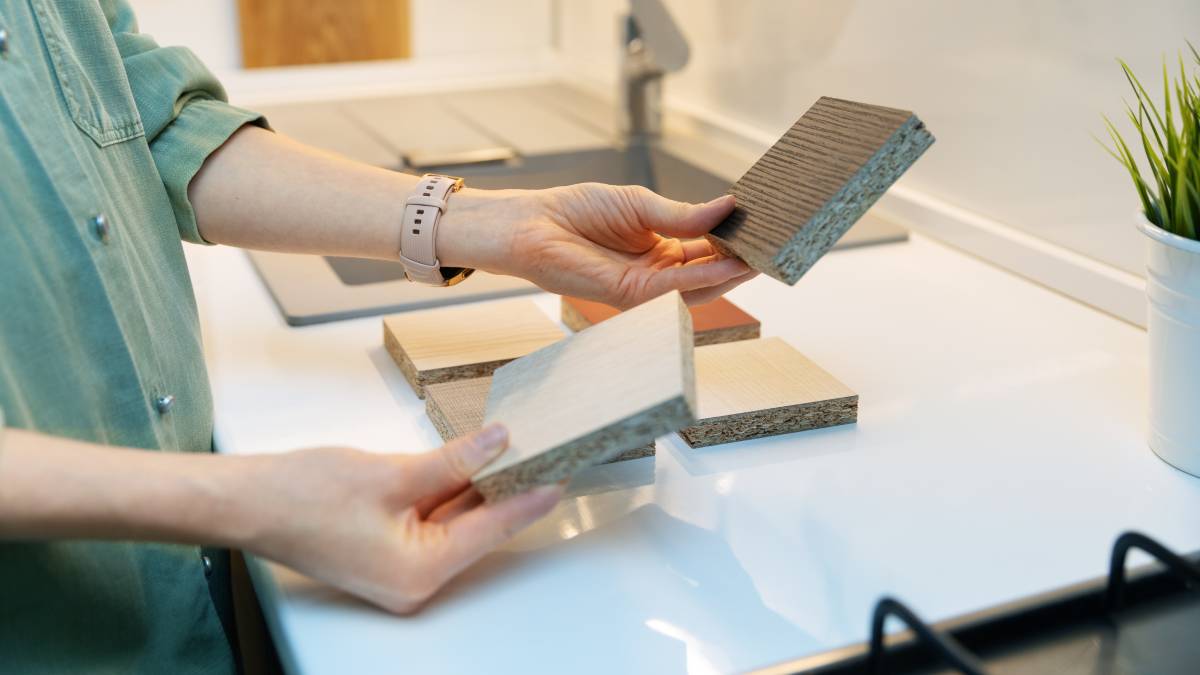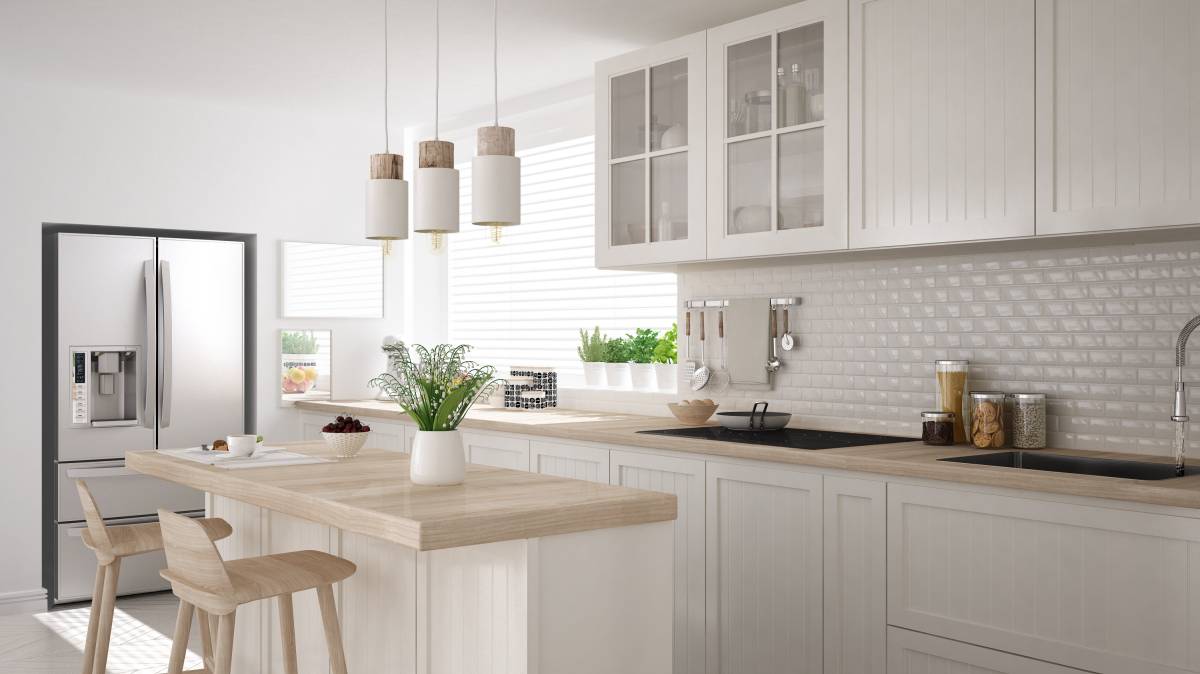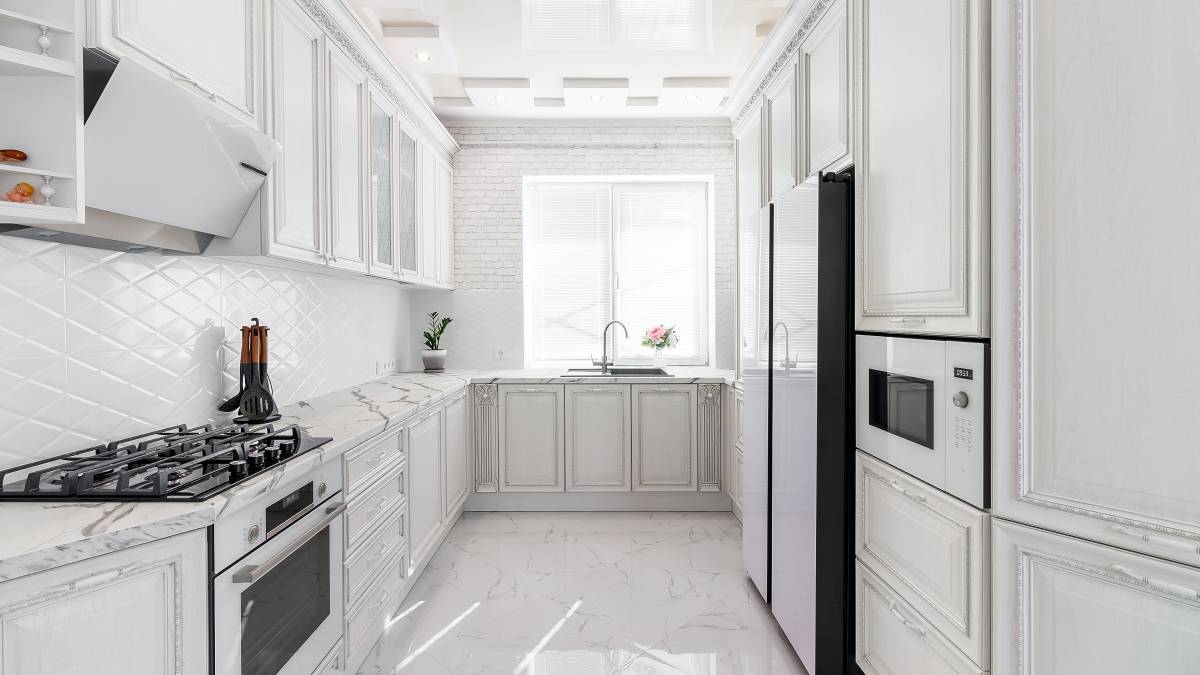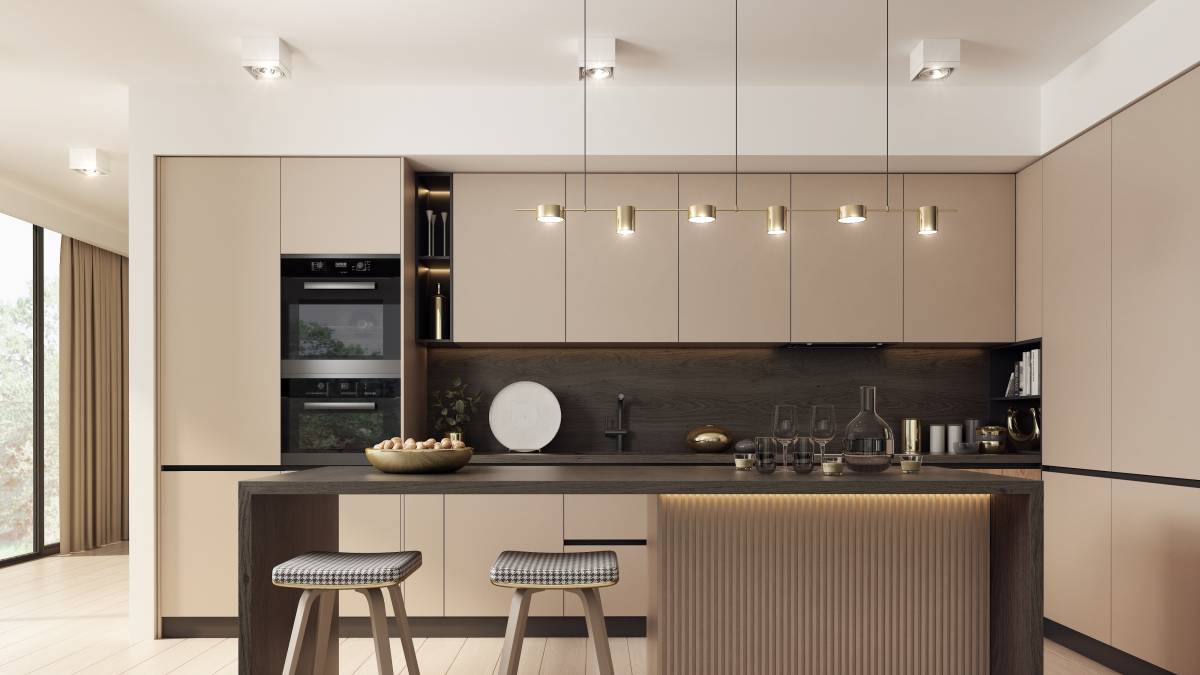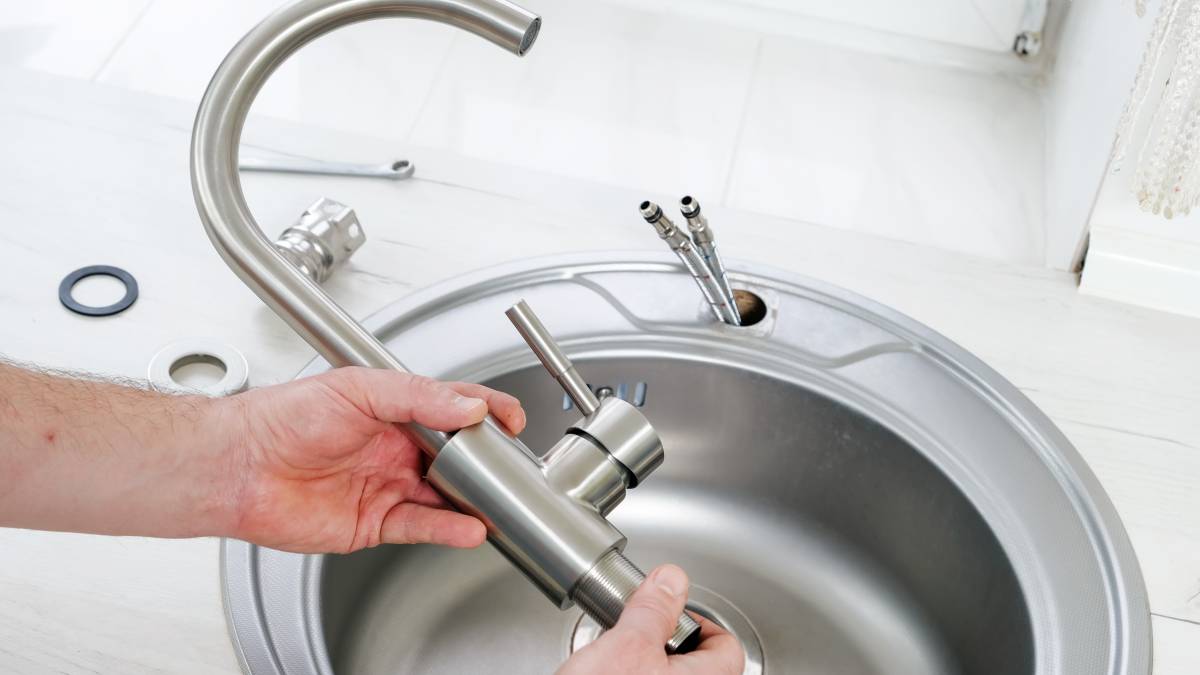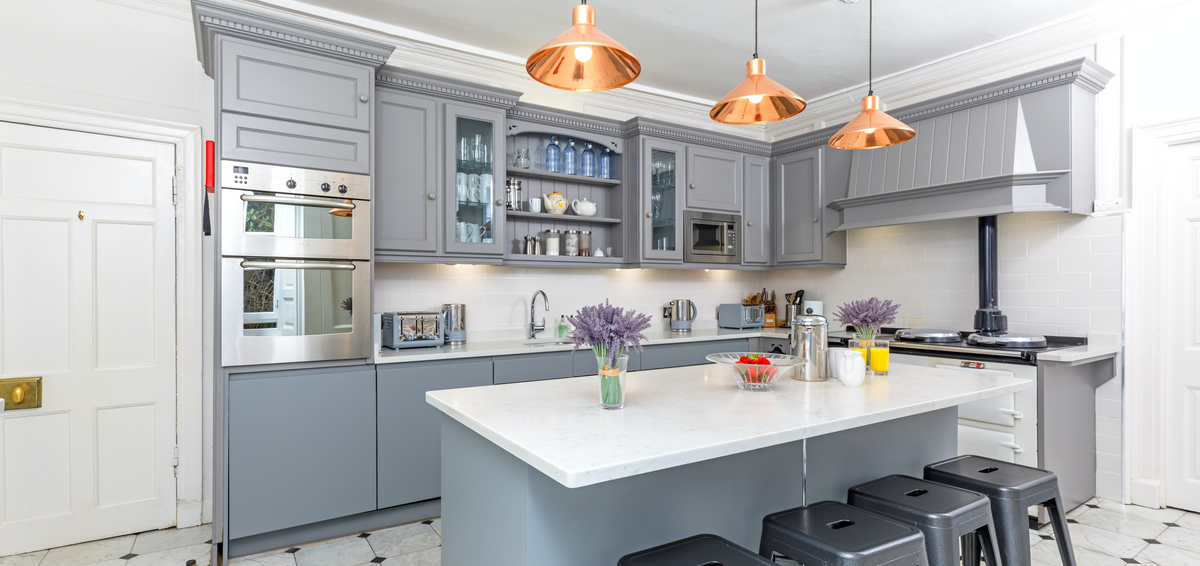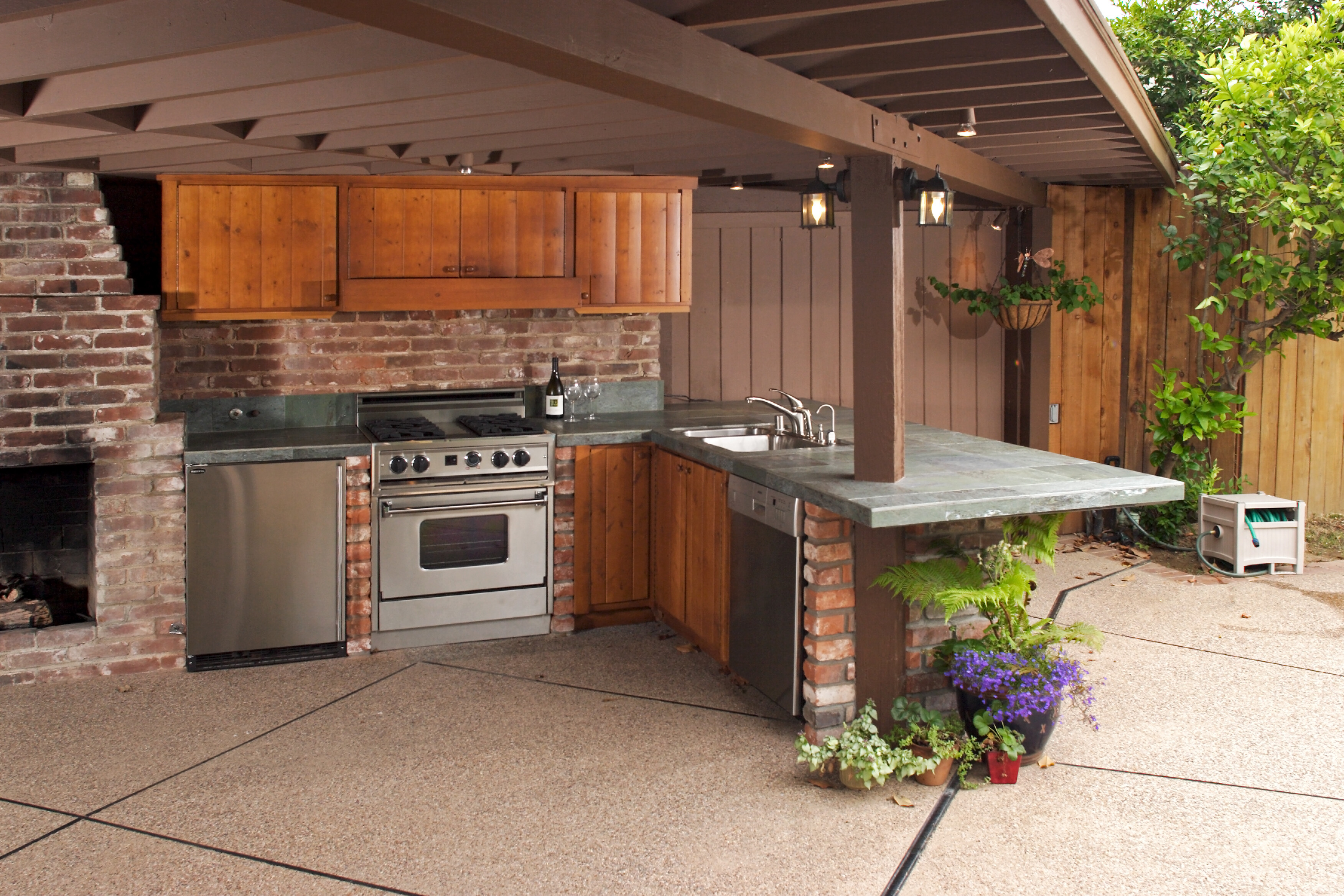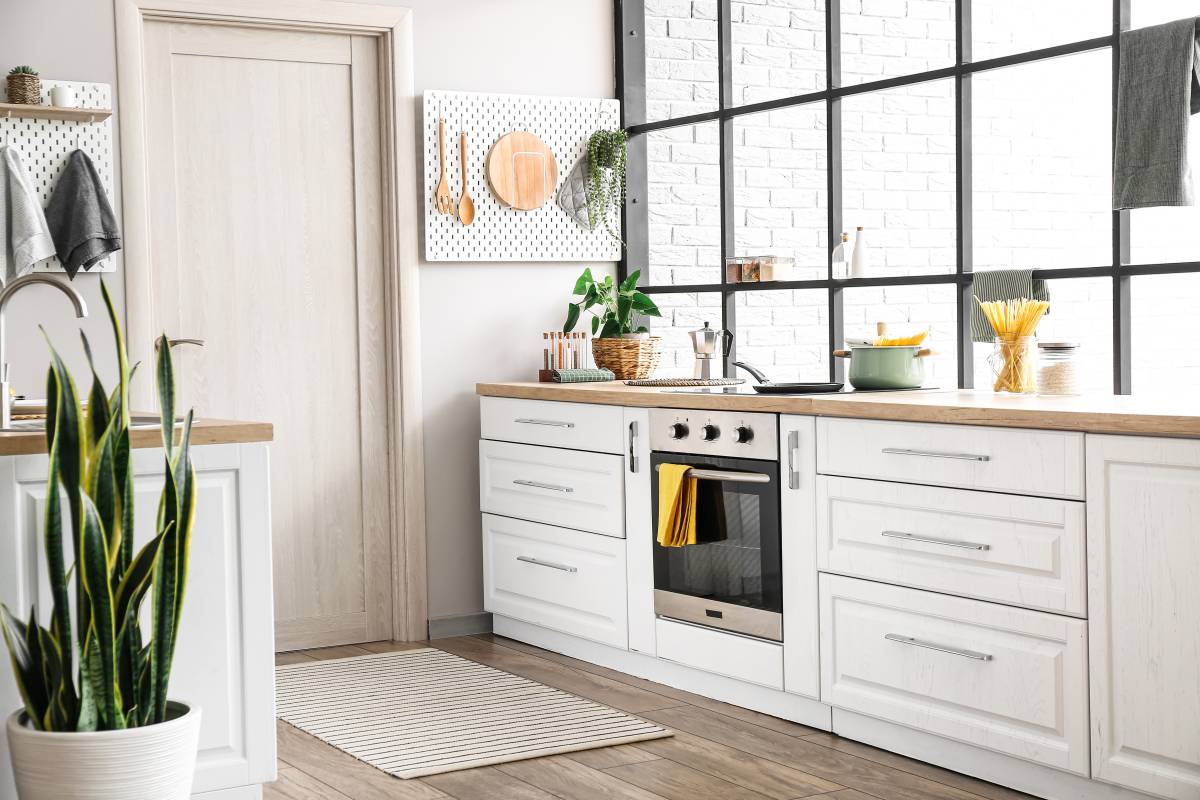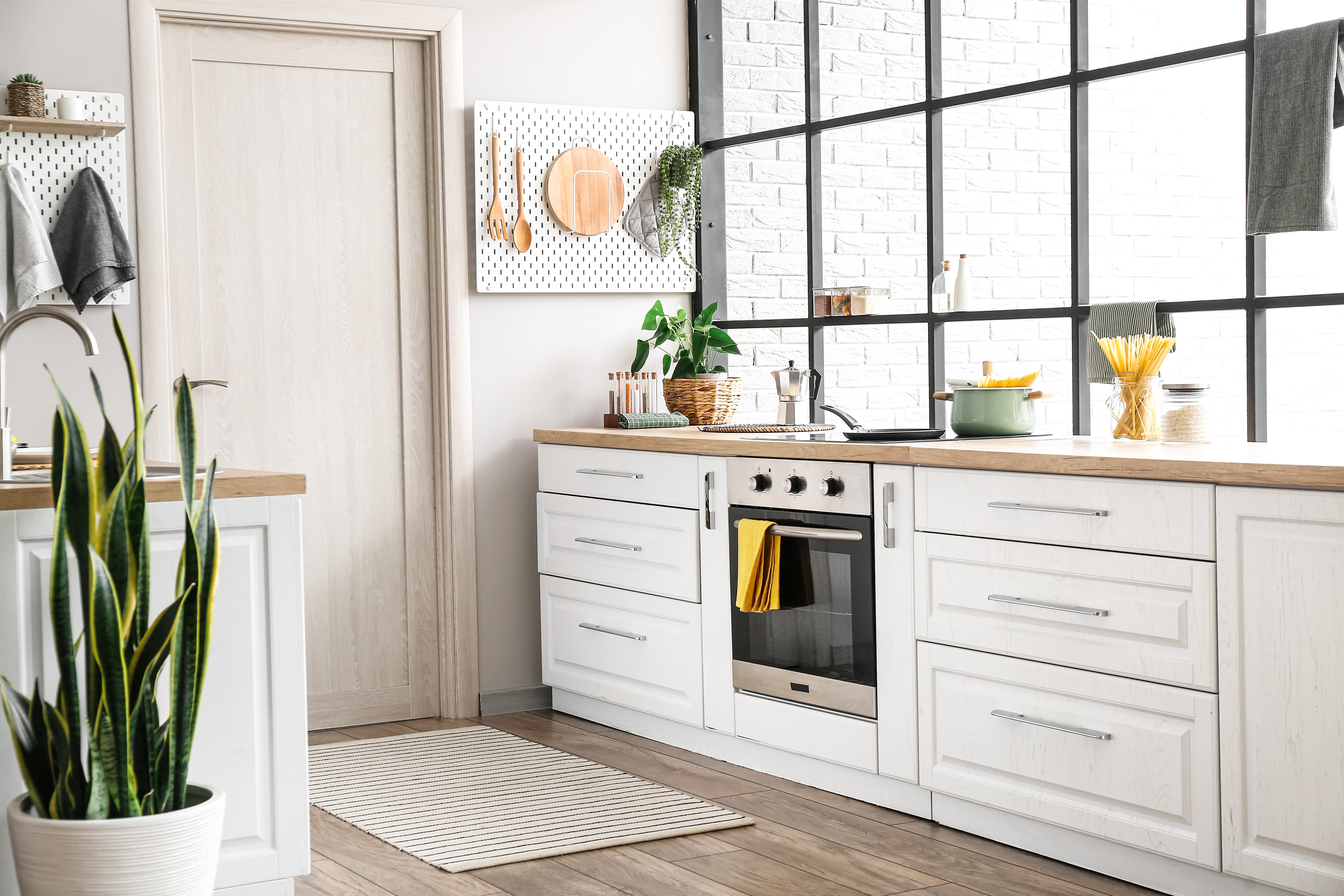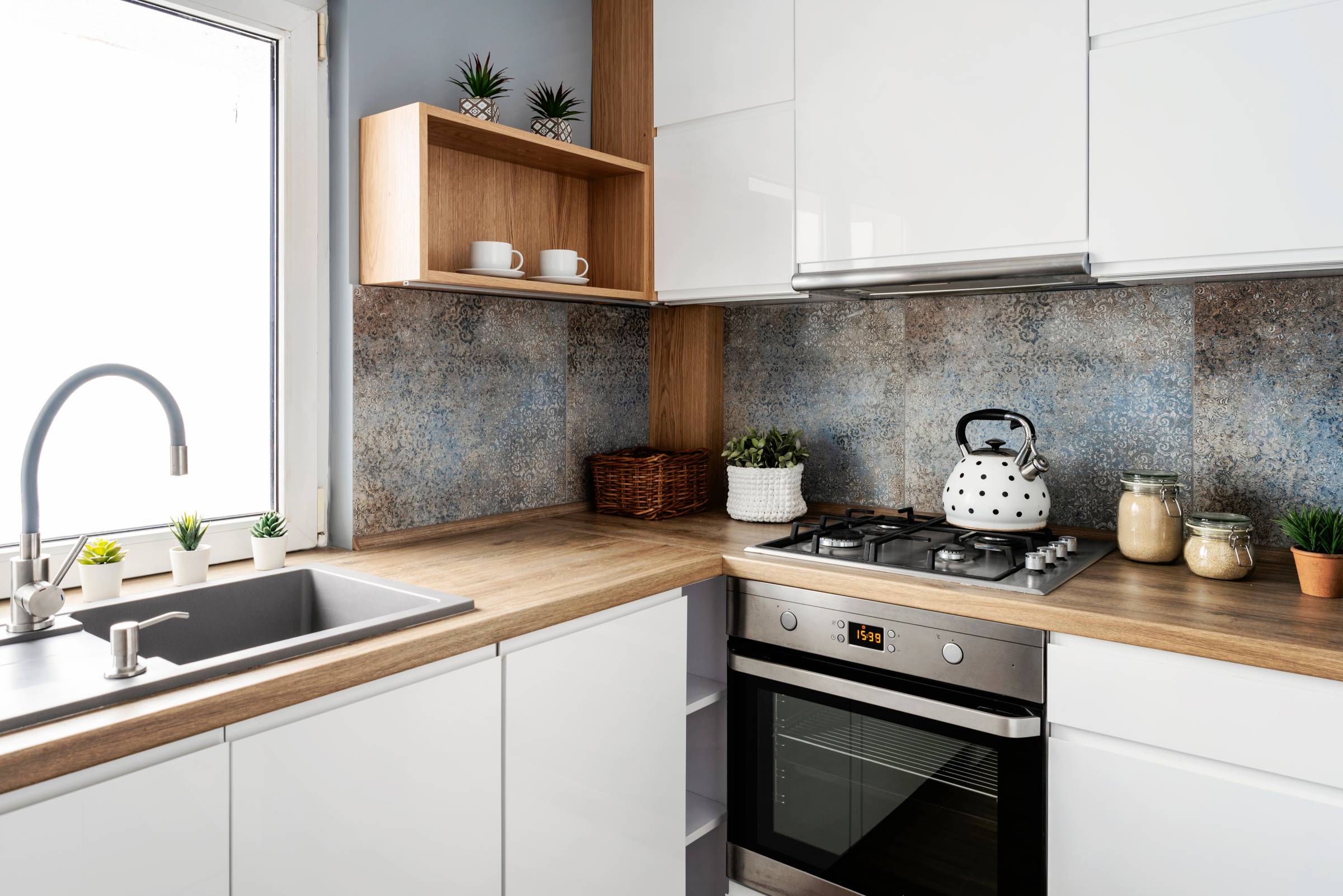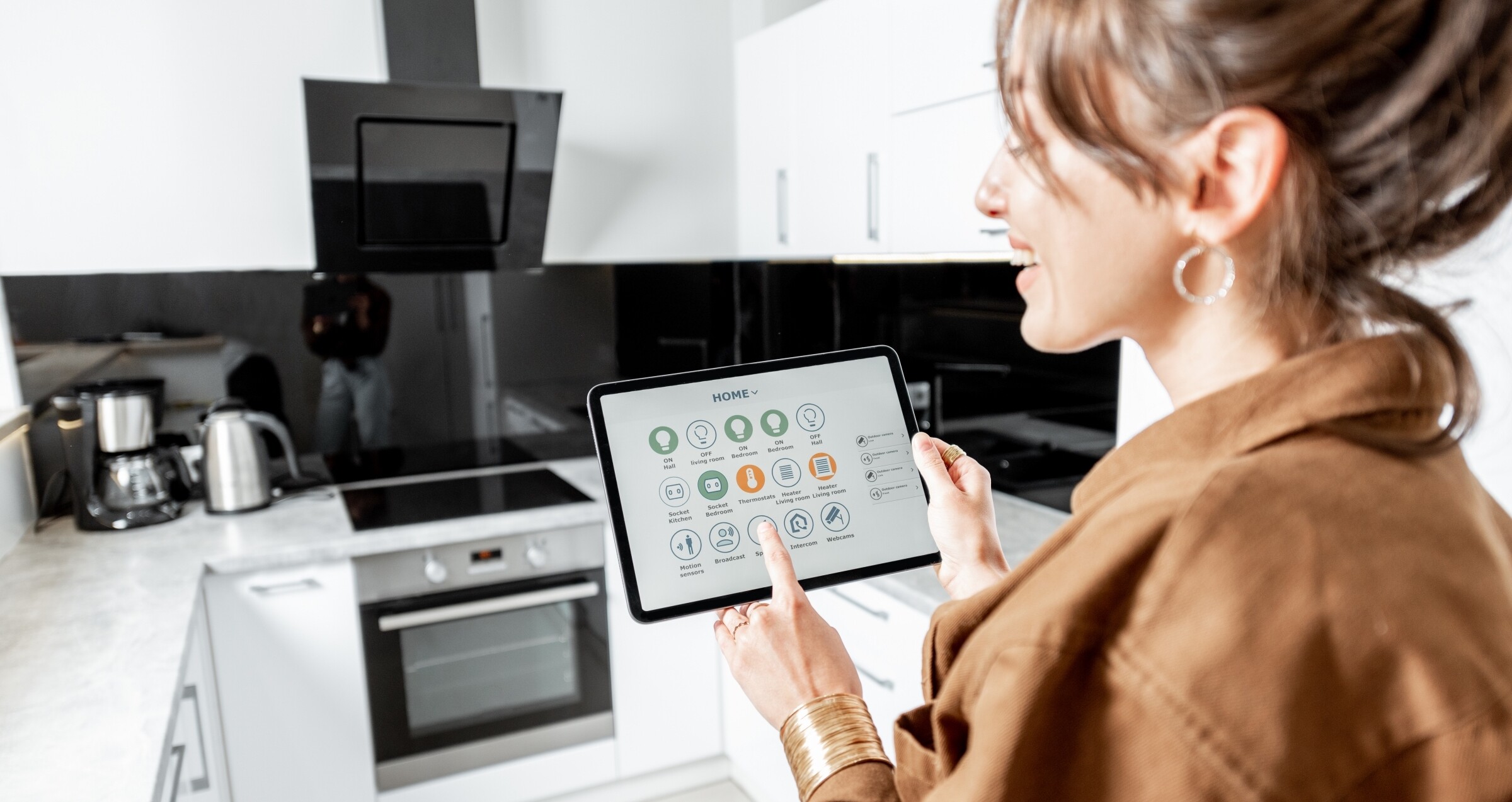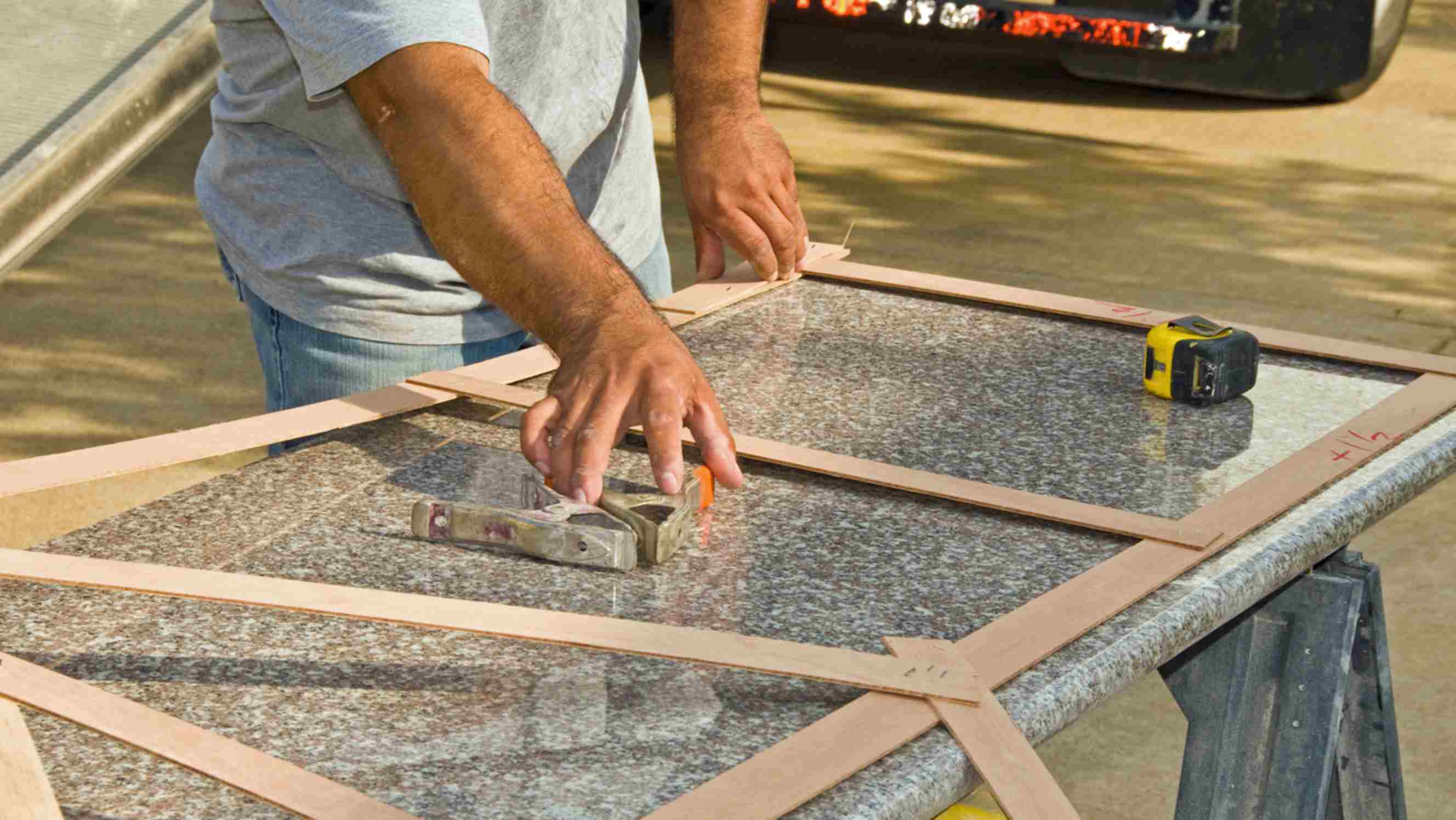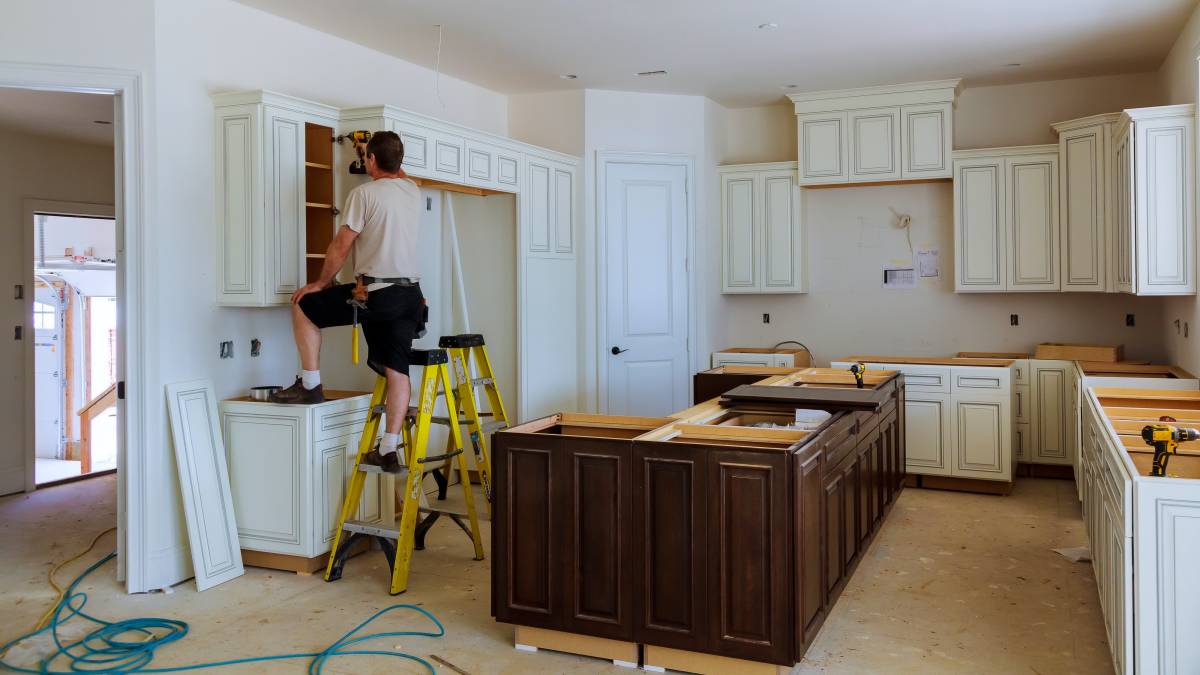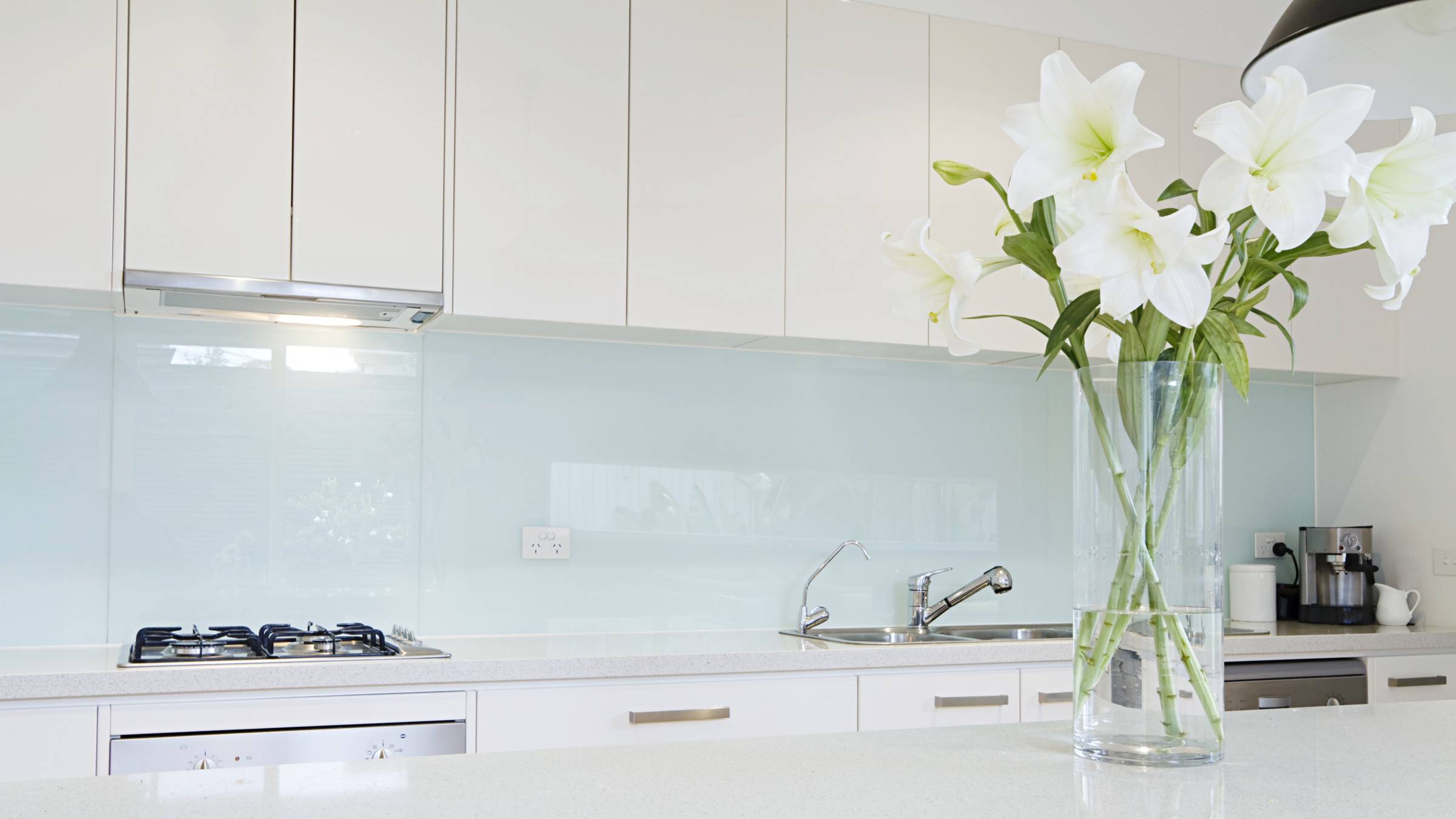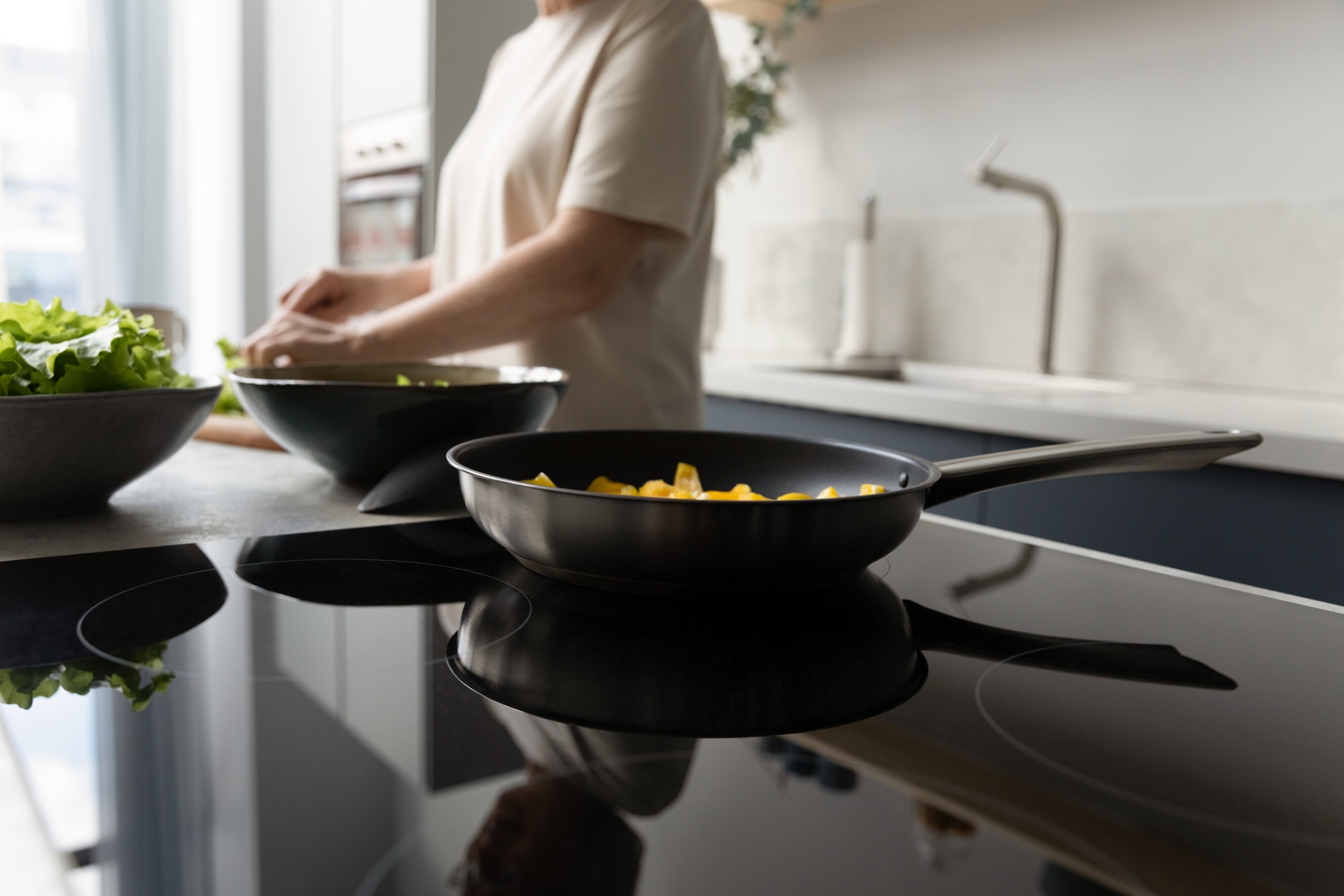
- Home/
- Comparisons/
- Kitchen Renovation/
- Ceramic vs Induction Cooktop
Ceramic vs induction hob: Which is the better choice?
Comparing ceramic and induction hob in terms of energy efficiency, cooking precision, and more.
Published on

Written by Angela A.
Staff Writer
Read more about our contributor
Key Facts
A ceramic hob uses electric heating elements beneath a smooth glass surface to cook food.
An induction hob uses electromagnetic fields to directly heat pots and pans.
Are you considering a new hob for your kitchen but stuck between ceramic and induction options? Choosing the right hob can be confusing. After all, you need to find one that complements your culinary skills and fits seamlessly into your kitchen design.
This guide dives into the features, benefits, and drawbacks of each option. We’ll provide a clear comparison of ceramic vs induction hobs to help you make an informed decision.
How does a ceramic hob work?
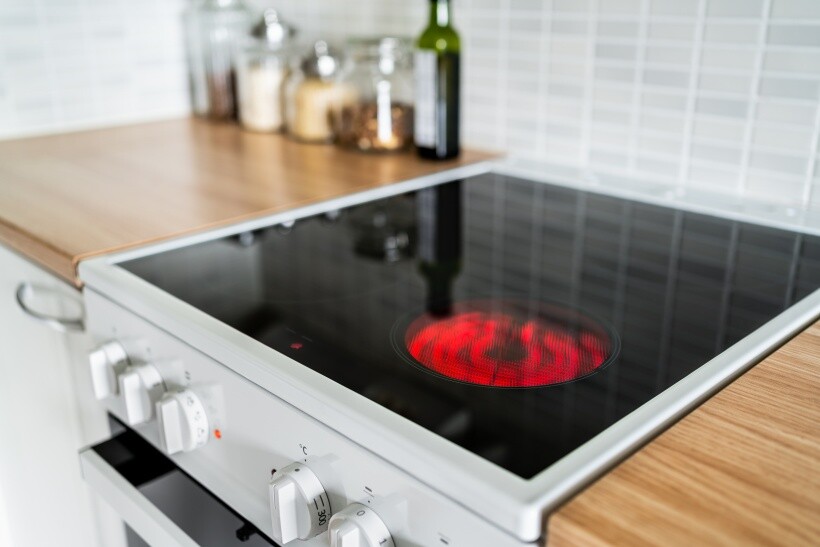 Smooth ceramic hob with radiant heat. (Source: iStock)
Smooth ceramic hob with radiant heat. (Source: iStock)
A ceramic hob works by using electric heating elements placed under a sleek, smooth surface. When you turn it on, these heat up, transferring heat through the glass ceramic layer directly to your pots and pans.
It’s straightforward and provides a steady source of heat. However, the surface stays hot even after you turn it off, so a bit of caution is necessary.
How does an induction hob work?
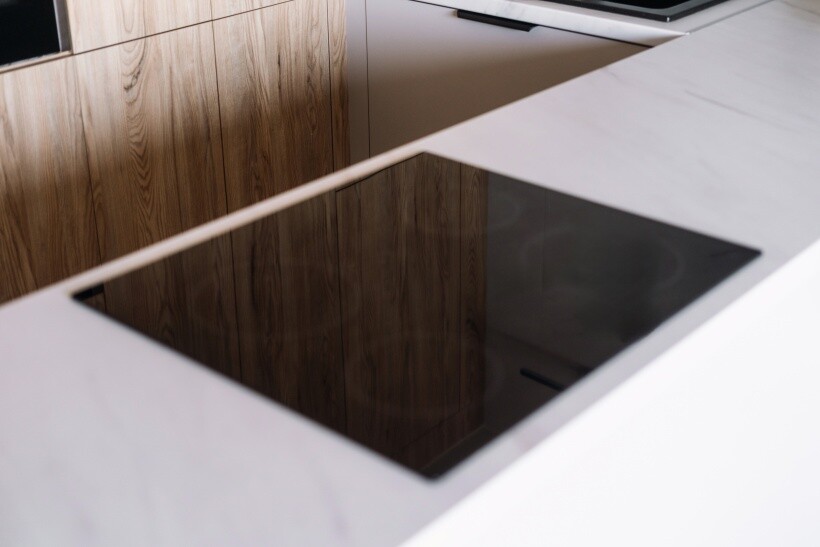 A minimalist kitchen featuring a new induction hob. (Source: iStock)
A minimalist kitchen featuring a new induction hob. (Source: iStock)
An induction hob uses electromagnetic fields to heat your pots and pans. Instead of heating up the surface, it sends currents straight into the cookware.
When you switch it on, the hob creates a magnetic field that interacts with the iron in your cooking utensils. This process generates heat right where it’s needed, making it super efficient.
Induction or ceramic hob: What are their key differences?
If deciding on which hob to buy seems overwhelming, this section will cover the main factors to consider. From energy efficiency to ease of installation, our goal is to help you understand the difference between ceramic and induction hobs.
In terms of energy efficiency
People are now looking for various ways to create a smarter kitchen environment that not only saves energy but also enhances the cooking experience. This makes the energy efficiency of your hob an important factor.
In terms of how well they use energy, ceramic hobs aren’t as efficient as induction hob. They heat the glass surface first, causing some energy loss. An energy comparison study on residential hobs showed that ceramic hobs’ efficiency is only 75.5%.
Induction hobs, on the other hand, use electromagnetic fields to heat the cookware directly, minimising energy loss. The same research discovered that induction hobs’ efficiency in transferring heat is about 83-86%, which results in lower energy consumption.
In terms of cooking precision
 Compact and efficient cooking on a smooth ceramic hob. (Source: iStock)
Compact and efficient cooking on a smooth ceramic hob. (Source: iStock)
Ceramic hobs take longer to heat up. They also cool down slowly and retain residual heat even after being turned off. This slow response time means that ceramic hobs aren’t ideal for recipes requiring quick temperature changes.
Induction hobs heat up much quicker. They offer almost instant cooling and heating adjustments for precise control over cooking temperatures, perfect for simmering or quickly boiling water. Gas hobs are also sometimes compared to induction, but even they can’t match the latter’s speed.
In terms of touch controls
When choosing between types of hobs, the simplicity of the interface is significant. You wouldn’t want to fiddle with hard-to-read dials or switches while cooking a delicate dish.
Ceramic hobs often come with touch-sensitive controls or traditional knobs. Touch controls are easy to clean, while knobs can collect grime and are harder to maintain. The functionality is pretty basic and offers simple temperature adjustments and cooking settings.
Induction hobs usually feature sleek, touch controls. They can be wiped clean and have no protruding parts. These hobs also come with advanced features like precise temperature control, timers, power boost functions, and safety locks.
In terms of cookware compatibility
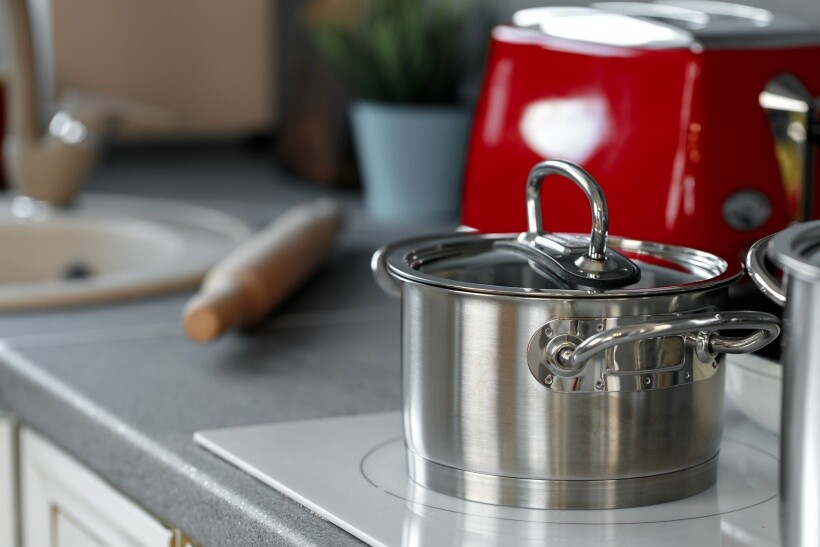 Cooking setup on a white glass induction cooktop. (Source: iStock)
Cooking setup on a white glass induction cooktop. (Source: iStock)
So, do you need special pans for ceramic hobs? No, just ensure the cookware has a flat bottom for even heating. Ceramic hobs are compatible with a wide range of cookware, so they’re usually a staple in kitchen renovations. You can use aluminium, stainless steel, copper, and glass cookware on them.
Induction hobs, however, require ferrous metal cookware like stainless steel or cast iron. To check if your existing cookware will work, see if a magnet sticks to it. Non-ferrous cookware won’t work unless they have a magnetic metal base.
People also compare electric hob vs induction. However, traditional electric hobs use heating coils under surfaces similar to ceramics. They heat up and transfer heat to cookware via conduction, so cookware compatibility is the same as with ceramic hob.
In terms of cost
Due to their advanced technology, induction hobs generally have a higher upfront price, ranging from £130 to £1,500. Ceramic hobs, on the other hand, usually cost less, between £100 and £1,000 in the UK.
The higher price of induction hobs can often be justified by their energy efficiency and long-term savings on energy bills. Ceramic hobs are generally more affordable, but models with touch controls and multiple cooking zones can increase the price. When considering the overall cost of a new kitchen, weigh the initial expense against these long-term benefits.
In terms of installation requirements
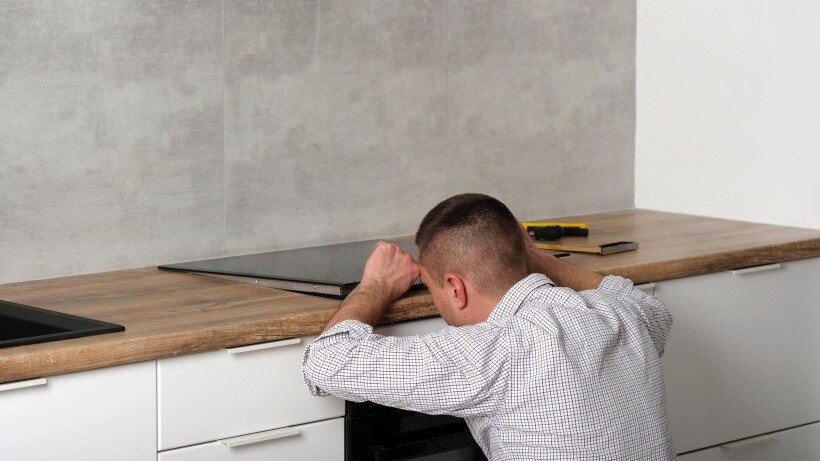 Technician fitting an induction stove into the countertop. (Source: iStock)
Technician fitting an induction stove into the countertop. (Source: iStock)
Whether you’re aiming for a complete IKEA kitchen or just sprucing up your kitchen, there’s typically a lot to keep track of. However, it’s essential to understand appliance installation costs and requirements.
Ceramic hobs are generally simpler to install. They use a standard electric connection similar to other electric hobs. This makes it easy and cheap, especially if you’re just replacing an existing unit. Usually, all you’d need is a flat, stable surface and good ventilation.
Induction hobs, however, often need more specialised installation. Due to their higher power needs, they might require a dedicated circuit, so an electrician should review your setup. This typically means higher installation costs but also ensures the safety and functionality of your new appliance.
Professionally install your new ceramic or induction hob with Airtasker
The choice between ceramic and induction hobs boils down to your specific requirements. However, when planning your kitchen renovation, it’s not just about the appliance itself but also its correct and safe installation. The good news is, you don’t have to handle this alone.
Airtasker lets you connect with professionals who can give a seamless solution to all your kitchen upgrade needs. Whether you need help with kitchen renovation or appliance installation, you can easily find experienced Taskers to do the job. You can even get your electric cooker repaired while you’re at it!
Learn more about our contributors

Written by Angela A.
Staff Writer
Angela Apolonio is an experienced writer with a Biology background. She writes about home tips, car upkeep, gardening hacks, and food facts, bringing a unique blend of science and practicality to her work. As a wife and a mother, she knows the value of iron-clad routines, so she's passionate about sharing what works for her with everyone else. She loves making everyday life simpler and helping readers find fresh ideas to bring more joy into their spaces.
Ceramic vs induction hob
Ceramic hob |
Induction hob |
|
|---|---|---|
Energy Efficiency |
Less efficient due to the need to heat the glass surface first |
Highly efficient due to directly heating the cookware |
Cooking Precision |
Offers less precise temperature control |
Offers precise temperature adjustments |
Touch Controls |
Has both basic touch controls and traditional knobs, former versions are easy to clean |
Advanced touch controls with additional timer and safety lock features, easy-to-clean |
Cookware Compatibility |
Compatible with all cookware such as aluminium, stainless steel, copper, glass |
Requires ferrous or iron-based metal cookware like stainless steel or cast iron |
Cost |
Generally more affordable due to its basic features |
Higher upfront cost due to advanced control functions |
Installation Requirements |
Easier installation with a standard electric connection |
Requires a dedicated circuit, typically higher installation costs |
FAQs on ceramic and induction hobs
Induction hobs can be expensive to purchase and may require cookware with magnetic properties. This limits the types of pots and pans you can use.
Electric hobs usually have visible coils or a smooth ceramic top, while induction hobs typically remain cool to the touch unless cookware is placed on them. It’s also wise to check your hob’s packaging or manual for specifications.
Using a normal pan on a ceramic hob is usually fine, but ensure the pan has a smooth, flat bottom to avoid scratching the surface.
Find kitchen renovators, fast
Post a task
Related articles
Related price guides
